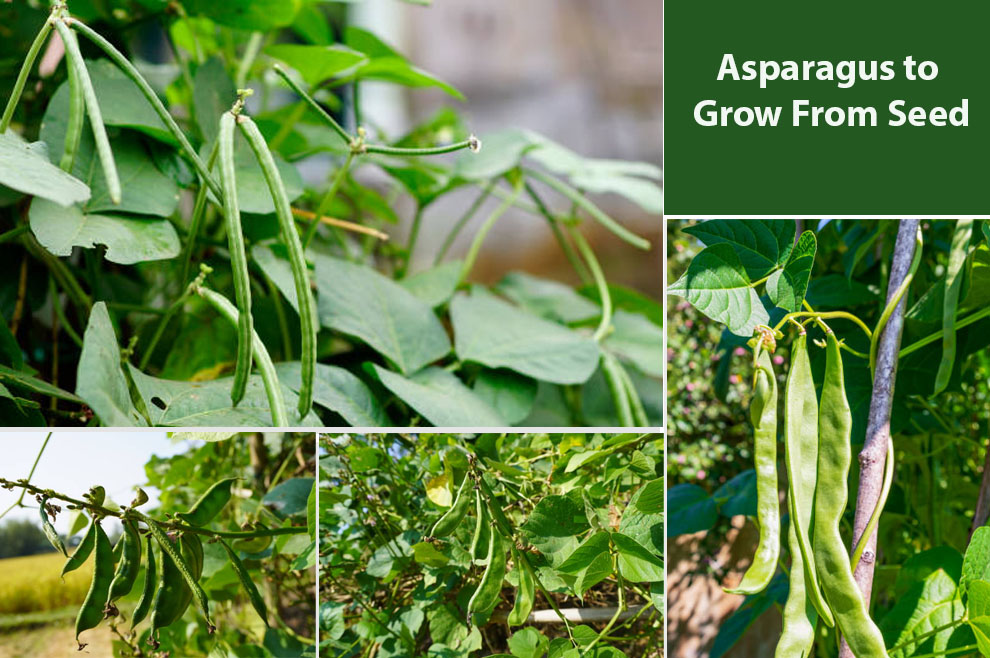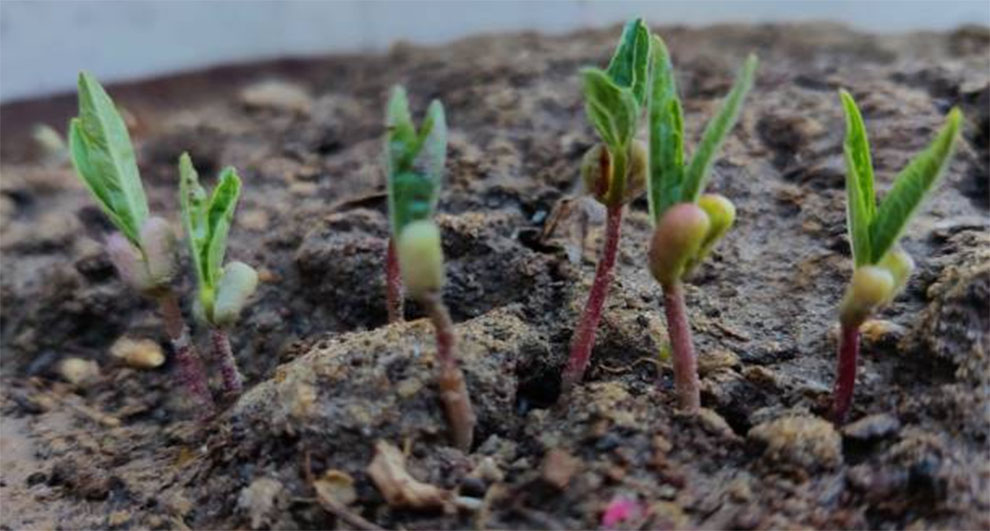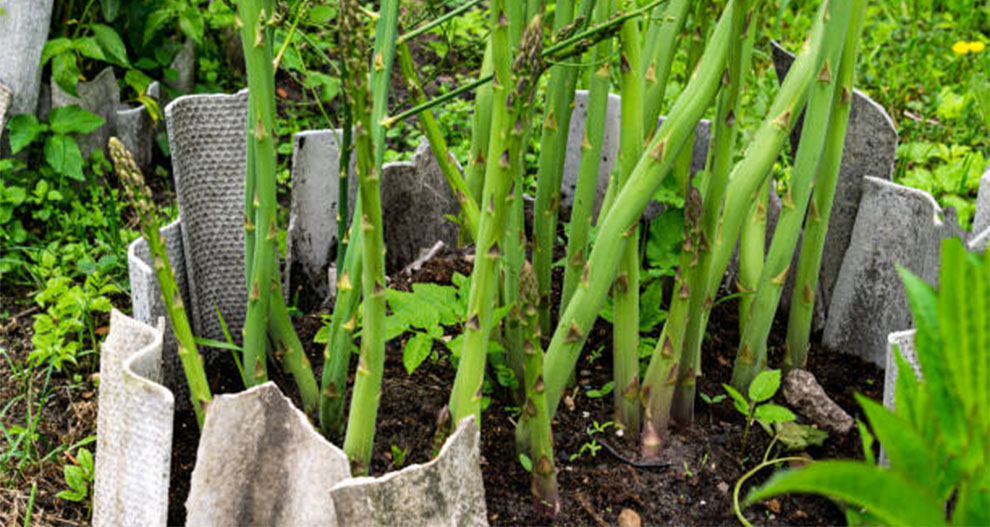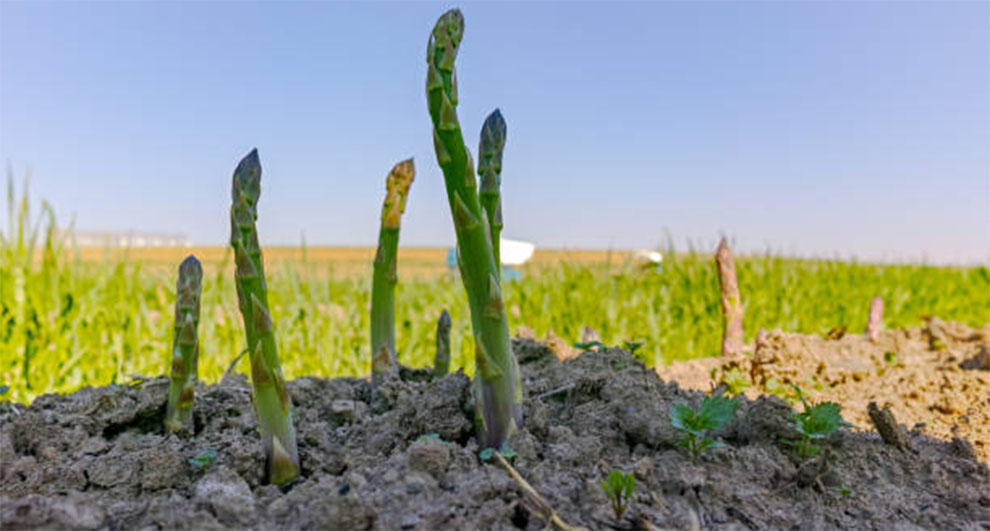How Long Does It Take Asparagus To Grow From Seed After Germination
You will have to wait one extra season to harvest the asparagus if you plant it from seeds as compared to roots. So, after 3 years you’ll have a continuous supply of home grown asparagus.

Asparagus is one of the most popular spring vegetables. Though it tastes delicious when cooked, it is even better when eaten raw. Not surprisingly, Asparagus vegetable, when grown in the garden and prepared fresh, is far superior to Asparagus bought from the grocery.
If you have always had store-bought Asparagus and switched to organically produced, homegrown Asparagus, you will see the vast difference between their taste.
Typically, people plant Asparagus from its one-year crowns, but some even plant them from seeds. How long does it take to grow Asparagus from seed? It is not tricky to grow Asparagus from the seeds, you just have to wait for three years till you can enjoy them. There is an extra wait year involved till you can start harvesting them as compared to when grown from root crowns.
In addition, whether you plant Asparagus from seeds or rootstock, you must remember that the Asparagus bed will be a permanent fixture in your lawn for many years. The plant abundantly yields for two to three decades, but it will take approximately two to three years before it is ready for harvest.
Ideally, a good Asparagus is famous for its nutty and delicate flavor, and its flavor only amplifies if you maintain ample distance between the picking and eating time.
Below, we will discuss in detail the time it takes for Asparagus to sprout from seeds and be ready to get consumed.
How Long Does It Take Asparagus To Grow From Seed?

It takes around three years for asparagus to grow from seeds till they are ready for harvest. Let us see how.
Before the last expected frost, you can sow the tiny seeds 10 mm deep in spring and keep them indoors or in a greenhouse in punnets or trays.
From then onwards, the seeds will take at least 14-35 days to germinate, provided you expose them to favorable conditions and the temperature available is between 73 and 80°F as the seeds do not grow in the cold atmosphere.
Water well, but do not overwater because waterlogged soil will not let the roots grow.
At the spring’s onset, you can repot the Asparagus. Firstly, you need to loosen the roots. So, soak the entire pot in water. Since Asparagus are pretty delicate at the moment, be cautious.
Now, move them to a bigger pot containing nutritious potting mix, ensuring every seed is in an individual container. It will count as Year 1 of the cycle. Mark your plants (if you hope to grow more in the subsequent years), as you will have to wait at least three years for harvesting.
In the first spring, you can plant the seedlings into the ground, ensuring enough space between the two. Some consider it a waste of valuable growing areas, but it is necessary. Finally, you can harvest every year for two to three decades from the third year onwards because of the long lifespan of asparagus.
Related: How to plant asparagus roots
How to Grow Asparagus from Seeds – Helpful Planting Tips

Here is a step-by-step guide you must follow to sow the seeds properly:
Step 1 – Pick the best seeds
To grow Asparagus from seeds successfully, you must first look for the best quality varieties. Pick ones that are disease resistant and organic, a few asparagus types you can choose from include Apollo, Purple Passion, and Jersey Knight.
Step 2 – Ensure you know the right time to start the seeds
Typically, start the Asparagus seeds indoors from winter through spring.
Step 3 – Get the pot ready
For starting the seeds, the host must be ready – pots. Your chosen containers should be able to drain water and must be at least two inches. Fill it with the potting mix, and water it to ensure that the potting soil is moist but not soggy.
Step 4 – Start the seeds
Before you start the seeds, we recommend soaking them in the water for at least two to four hours. It helps accelerate the germination process. Next, sow the Asparagus seeds in the potting soil. Every seed should be 0.5 inches into the potting soil.
Once done, you can move the pots to a warm place. Now, starts your real test of patience. It is because growing Asparagus from seeds is a tedious process. After this, germination might take another two to five weeks.
Step 5 – Prepare the garden spot
After the last winter frost, you can prepare the garden spot where you will transplant the Asparagus. Using a garden fork, fork the top ten inches of the garden. It helps loosen the soil and eliminate stones, large rocks, and plant roots.
Moreover, before you start prepping the garden spot, you need to locate the area where you will transplant the Asparagus. It should be a spot with fertile and well-draining soil.
Further, its pH should be between 6.5 to 7. You can add about two to five inches of compost and mix it to the garden soil to increase its nutrient level. Finally, water them to leave the soil wet, not soggy.
Step 6 – Seedling Transplantation
From germination, wait for another two to three months to transplant the seedlings and shift them to a permanent spot. Again, you have to prepare the garden before you take the seedlings from the pot.
You can make rows approximately fourteen inches apart, ensuring the hole in the rows is at least four inches wide. Leave at least a three to six inches gap between the two holes.
Insert the seedlings in every four-inch hole and cautiously fill it with soil to veil the Asparagus root crowns as the seedlings grow. If the spears are thinner or thicker than usual, you can alter the hole depth and size.
When the seedlings’ spears are thick, place them at least twelve to fourteen inches apart and insert the buds in six to eight inches holes. On the contrary, if the spears are thin, leave an eight-to-ten-inch gap between them, and keep the buds in the four inches holes.
Step 7 – Water well
Once you finish transplanting, you must water the green instantly. However, do not overwater and flood the garden. The water quantity should be just enough to leave the garden soil moist. After this, you can fixate your watering schedule to once a week.
Step 8 – Feed the Asparagus
Like every other plant, even Asparagus needs some nutrition to grow well. So, feed them with an all-purpose compost during the spring. For every 3m row, you should add at least 440 grams of compost.
Step 9 – Aftercare
For taking good care of asparagus, continue watering the garden as per the schedule, ensuring that the topsoil does not feel dry. Anytime you spot the weeds, handpick them and get rid of them immediately. Whenever required, trim approximately two inches of fern and burn the foliage. It helps avoid the disease’s spread. Be cautious and regularly inspect the plant for pests and diseases.
Related: Best tasting asparagus variety | Asparagus fern indoor care
Do Asparagus Seeds Need Heat To Germinate?

Typically, starting Asparagus is more or less the same as starting any other organic vegetable seeds. You can start the seeds indoors if you have your seed starting kit. In addition, you can use seed-starting containers or peat pots to help with the process.
Asparagus germinate well if you keep them warm. So, employing the bottom heat, ensure that the temperature is maintained in the high 70s. How long does it take Asparagus seeds to germinate? Since Asparagus takes at least three weeks to germinate, be patient and do not rush through things.
After the seeds germinate, you can reduce the temperature and maintain it between 60-70 degrees. Once the danger of the frost is over, you can even shift the plant outdoors. It helps them harden off. Finally, plant them in a temporary nursing bed, ensuring their roots are two to three inches deep in the soil.
Frequently Asked Questions
Ques 1. How long Asparagus takes grow from seeds before harvest?
Ans. Asparagus takes time to attain maturity. Usually, germination takes around two to five weeks, but the plant can take three years before they are ready for harvest.
In the spring of the third year, you can start harvesting Asparagus and continue to do so every year for the next two to three decades.
Ques 2. Is it hard to grow Asparagus from seed?
Ans. It is not challenging to grow Asparagus from the seed. But, it only means an extra year on the waiting period till you start harvesting.
Ques 3. Can you start Asparagus seeds indoors?
Ans. You must start the Asparagus seeds indoors and let them stay for about twelve to fourteen weeks before you can plant them out in the garden.
Make sure you shift them outdoors only when the danger of the last frost is over. From there onwards, Asparagus take another three to six weeks to sprout.
Ques 4. What month do you plant Asparagus seeds?
Ans. Experts advise gardeners to plant their Asparagus trees indoors or in a greenhouse in half-inch deep soil and store them at a temperature between 70 to 85 degrees Fahrenheit between February and March.
